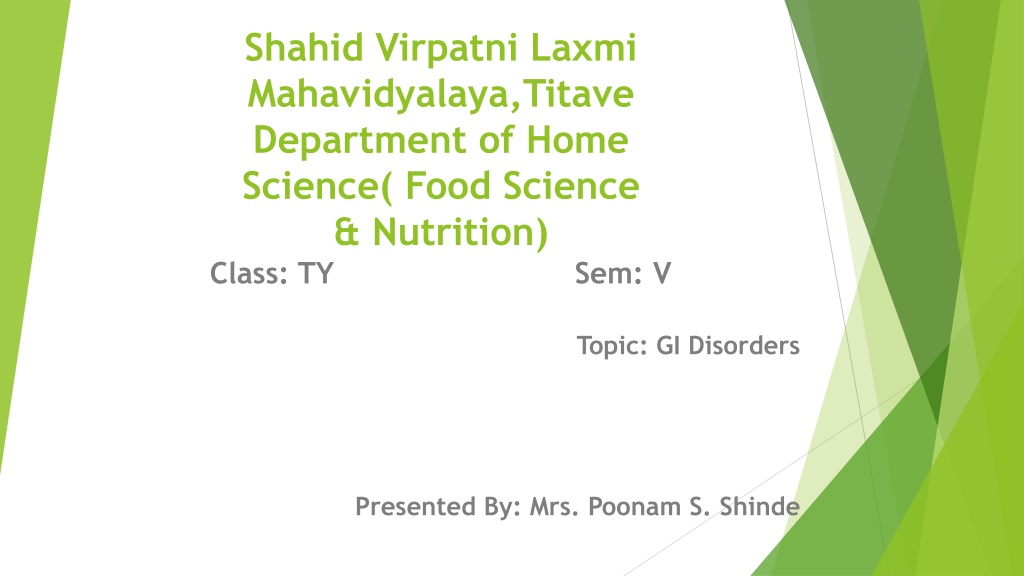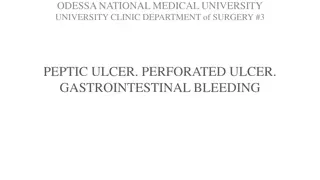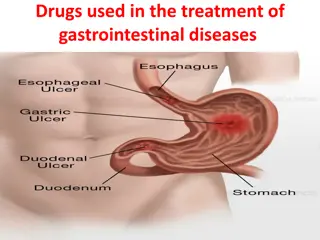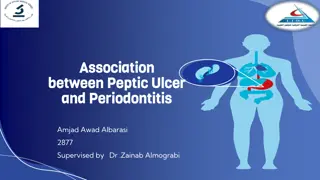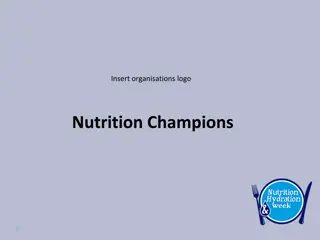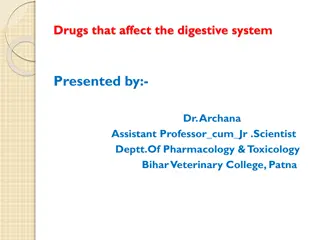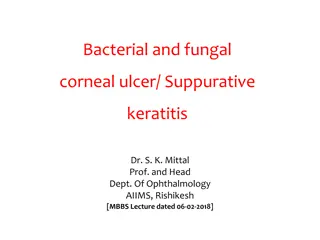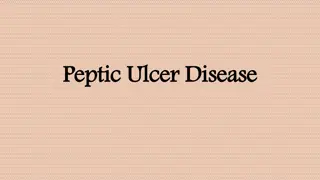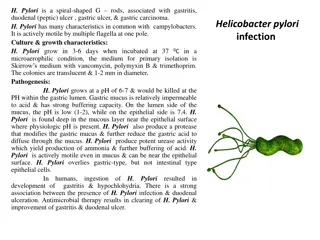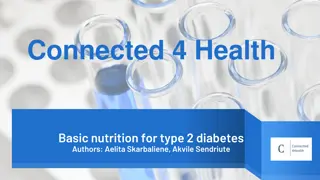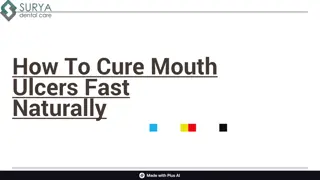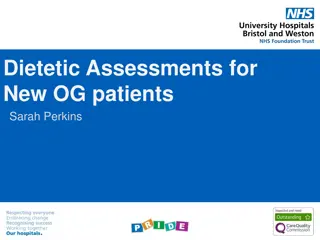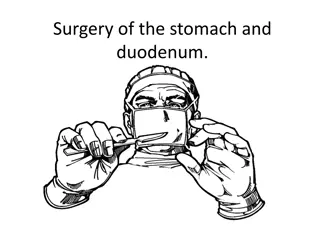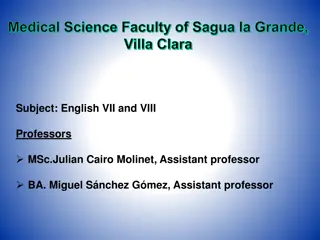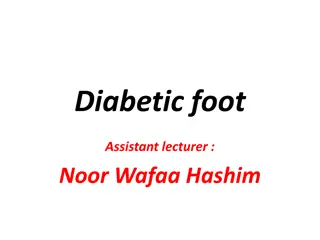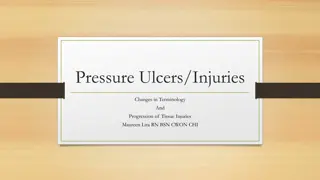Understanding Peptic Ulcers: Causes, Symptoms, and Nutritional Management
Shahid Virpatni Laxmi Mahavidyalaya conducted a presentation on gastrointestinal (GI) disorders, focusing on peptic ulcers. The content covers the etiology, symptoms, and nutritional management of peptic ulcers, emphasizing the importance of proper diet in managing this condition. Peptic ulcers, characterized by localized erosion in the alimentary tract, can lead to various symptoms like epigastric pain and heartburn. Nutritional management involves a balanced diet with specific emphasis on protein, fats, vitamins, and fiber. Complications such as hemorrhage may require surgical intervention. Overall, understanding the causes and proper management is crucial in dealing with peptic ulcers.
Uploaded on Sep 21, 2024 | 0 Views
Download Presentation

Please find below an Image/Link to download the presentation.
The content on the website is provided AS IS for your information and personal use only. It may not be sold, licensed, or shared on other websites without obtaining consent from the author. Download presentation by click this link. If you encounter any issues during the download, it is possible that the publisher has removed the file from their server.
E N D
Presentation Transcript
Shahid Virpatni Laxmi Mahavidyalaya,Titave Department of Home Science( Food Science & Nutrition) Class: TY Sem: V Topic: GI Disorders Presented By: Mrs. Poonam S. Shinde
GI Disorders Etiology Symptoms Nutritional Management
Peptic Ulcer The term peptic ulcer is used to describe any localized erosion of the mucosal lining of those portions of the alimentary tract that Come in contact with gastric juice. This disintegration of tissues can also result in necrosis. The majority of ulcers are found in the duodenum, although they also occur in the Esophagus. Stomach or jejunum.
Aetiology Bacterial Infection Genetic Factor Sex Age Stress Potentially Irritant Substances High Fiber Diet Emergency Injuries
Symptoms Epigastric pain, heart burn, etc. due to reflux of acid into oesophagus occurring as deep hunger Contraction 1 to 3 hours after meals is often the chief Complaint. The pain may be described as dull, piercing, burning, or gnawing and is usually relieved by taking food or alkalies. Discomfort and flatulence in upper part of abdomen. Pain is also associated with hypermotility of the stomach/gastric distension following indigestion of large amounts of food or liquids. Low plasma protein levels are often present and delay rapid and Complete healing of the ulcer. Weight loss of iron deficiency anemia are common. The intake of iron, ascorbic acid, & B Complex vitamins, particularly thiamine may be less than RDA because of self imposed limitation of leafy green vegetables & other good source of these nutrients.
In some instances, haemorrhage is the first indication of an ulcer & requires surgical intervention. Other Complications such as obstruction, perforation & Carcinoma of the gastric ulcer are treated surgically. Bleeding ulcers can result in vomiting known as haematemesis (dark brown in color). There are spasms of pyloric canal & this may give rise to a feeling of sickness, distension & prevent taking food.
Nutritional Management of peptic ulcer It was customary to suggest bland diet for ulcer patients. Bland diet is a diet which is mechanically, chemically & thermally non-irritating. Sound total nutrition Protein Foods Fat Carotenoids Ascorbic acid Gas Formers Fiber
